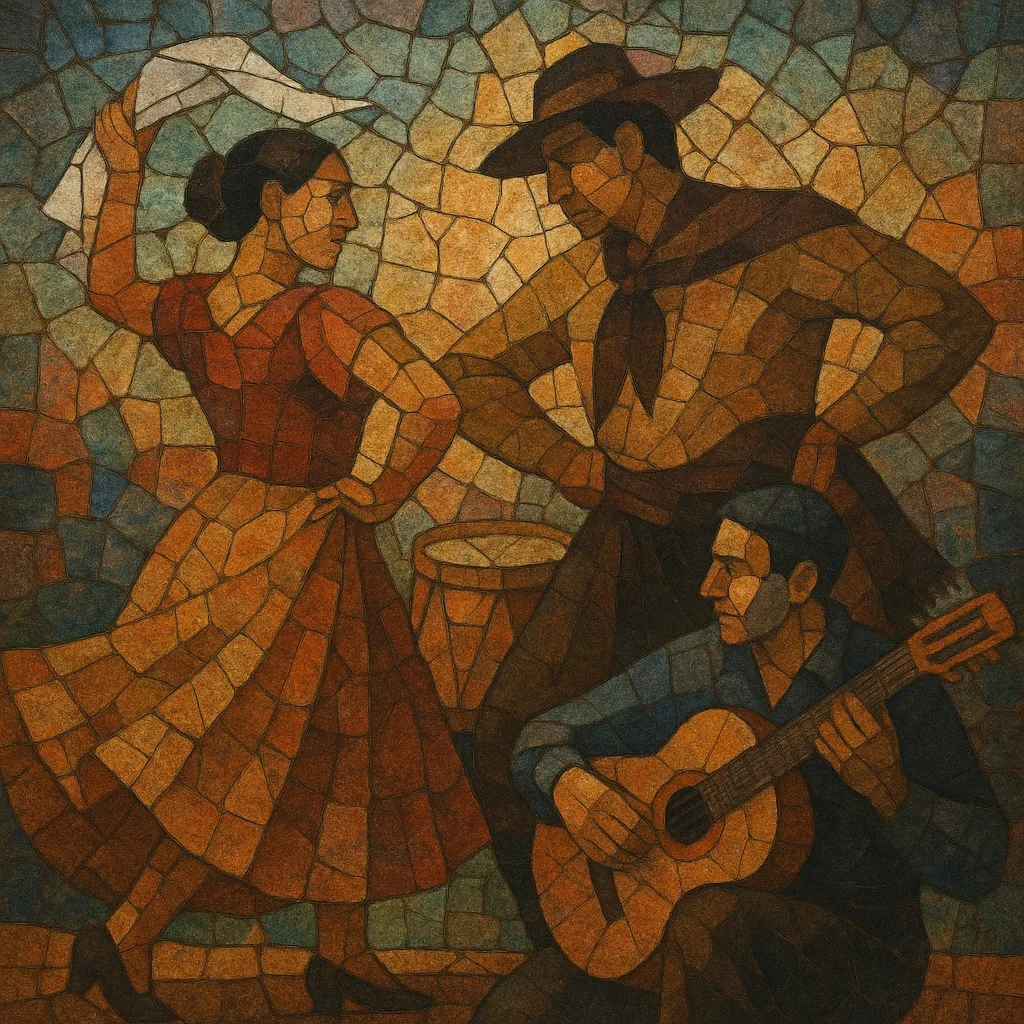Zamba (with “z”) is a traditional Argentine song-and-dance form, distinct from Brazilian samba. It is a lyrical, courtship-oriented couple dance from Argentina’s northwest that uses a handkerchief (pañuelo) as a central prop.
Musically, zamba is most often set in 6/8 with frequent hemiola (3:2) interplay against 3/4, producing a gently lilting yet subtly syncopated feel. Tempos are moderate to slow, and melodies are cantabile and expressive, with strophic forms that highlight poetic verses (coplas). Typical instrumentation includes voice, nylon‑string guitar (fingerpicked arpeggios), and bombo legüero; charango, violin, and other folk instruments may appear.
The mood is romantic, nostalgic, and tender, with lyrics that often celebrate landscape, memory, and intimate dialogue. Iconic pieces like “Zamba de mi esperanza,” “La López Pereyra,” and “Alfonsina y el mar” exemplify its blend of poetic sensibility and graceful dance impulse.
Zamba emerged in 19th‑century Argentina, especially in the northwest provinces (Salta, Tucumán, Catamarca, Santiago del Estero). It grew from the pan‑Andean and Hispanic creole dance continuum shaped by the zamacueca (Peru/Chile) and related Iberian forms like the fandango and seguidilla. As these styles circulated along colonial routes, Argentine musicians and dancers developed a slower, more serenade‑like variant that emphasized lyrical singing and a courtship dance with a handkerchief.
By the early 1900s, zamba had become a cornerstone of Argentine folklore. Classic compositions such as “La López Pereyra” entered the repertoire. Guitarists and singer‑poets (payadores and later cantautores) codified its strophic song forms, the characteristic 6/8 pulse with hemiola, and the dance vocabulary (vuelta, media vuelta, coronación). The bombo legüero became a emblematic percussion voice.
The mid‑century folklore boom—amplified by radio, records, and festivals like Cosquín (since 1961)—carried zamba across Argentina and abroad. Artists including Atahualpa Yupanqui, Los Chalchaleros, Los Fronterizos, Eduardo Falú, and Jorge Cafrune made zambas national symbols. Composers such as Ariel Ramírez and Félix Luna contributed enduring zambas like “Alfonsina y el mar.” In the 1960s, the Nuevo/Nueva Canción movements drew on zamba’s poetic intimacy and social resonance, using its language to express cultural roots and contemporary concerns.
After periods of censorship and political turmoil, zamba reemerged strongly with interpreters like Mercedes Sosa and later Soledad Pastorutti and Peteco Carabajal, bridging traditional and popular audiences. Today, zamba remains a living tradition—performed in peñas, taught in dance schools, and reimagined through folk‑pop, chamber arrangements, and cross‑genre collaborations—while retaining its core: lyrical storytelling, graceful dance, and a gentle 6/8 sway.


